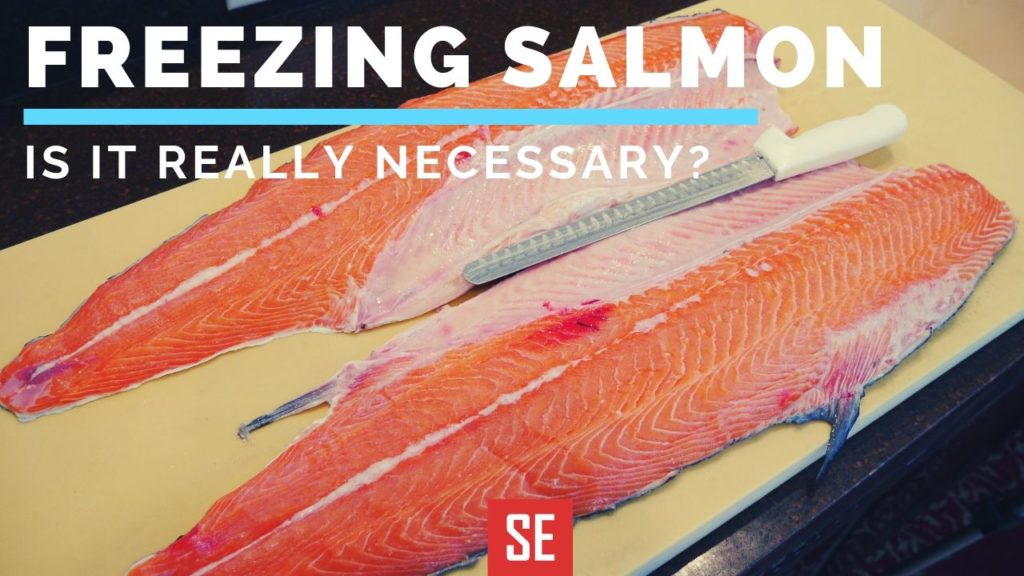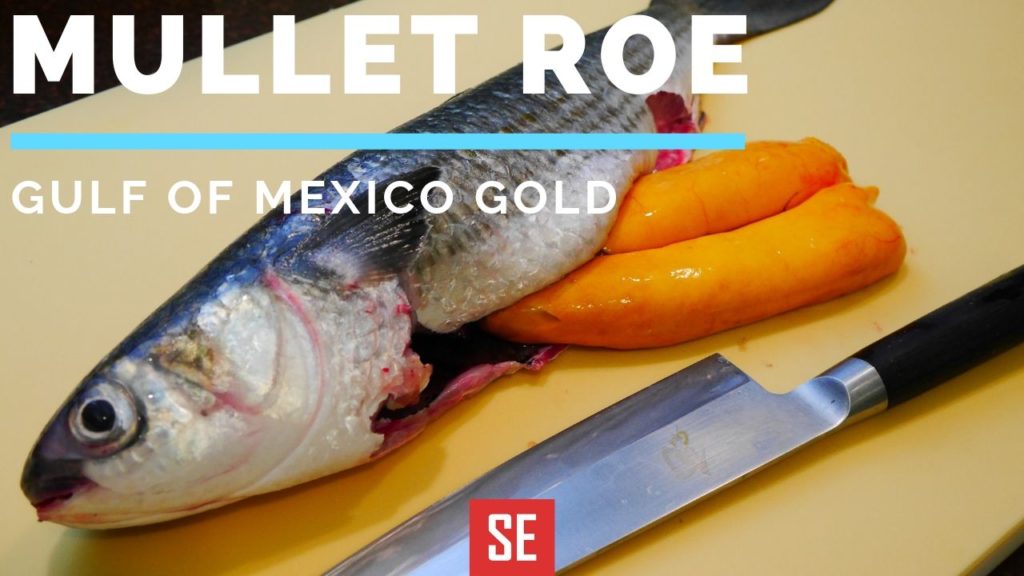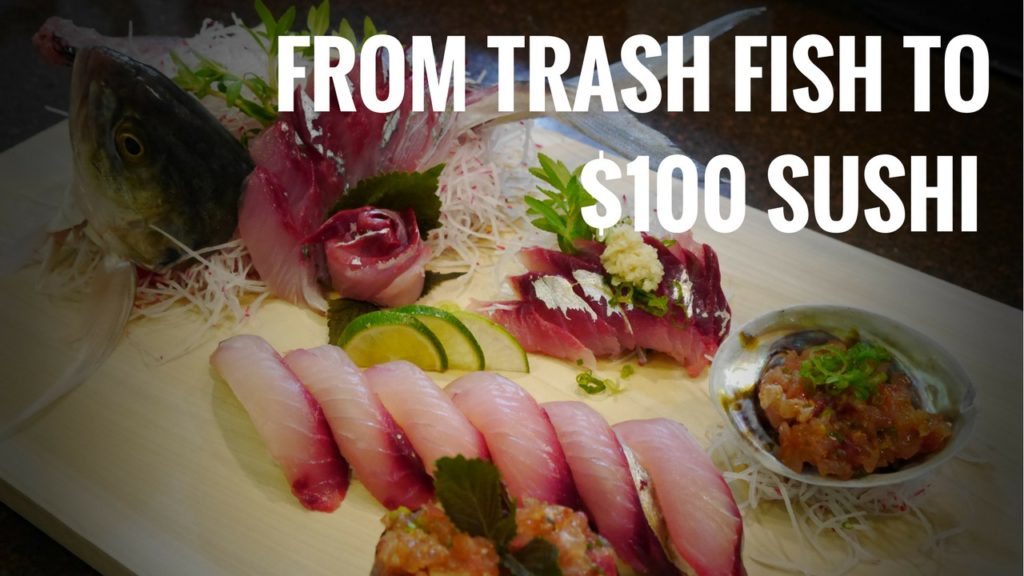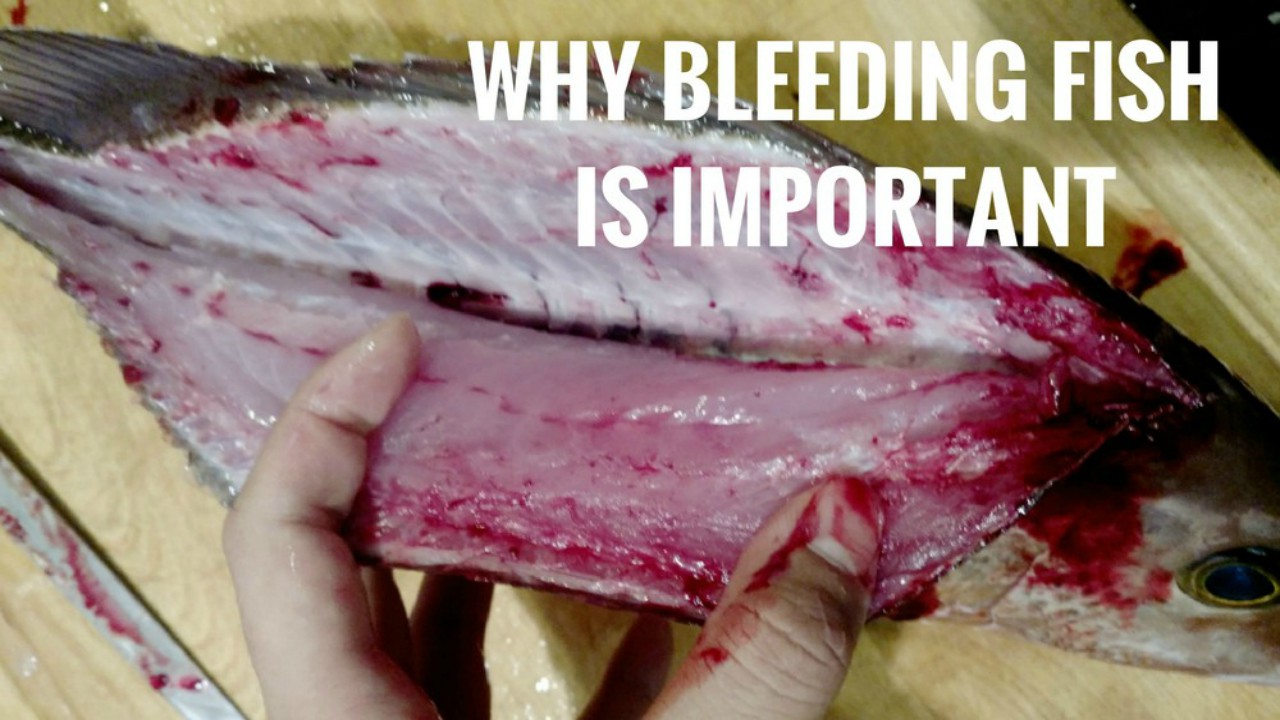
Why Bleeding Fish is Crucial
Bleeding fish as soon as it is caught is one of the most important steps in preserving the quality of the meat. Not only does this apply for general cooking applications, but it is especially true for raw consumption. Blood is a substrate that provides nutrients for bacteria to grow, and aid in expediting meat degradation. Also, the intense stress that a fish goes under when its caught can cause lactic acid to buildup, which can yield a lower quality fish.
Generally, the excess blood in fish makes it very difficult for sushi applications. So the sooner the fish is bled and killed, the better quality meat you’ll have.
Lactic Acid In Fish
Lactic acid is naturally found in animals and normally occurs during intense exercise when not enough oxygen is available in the blood. The same is for fish. The longer the fish fights in or out of water, the more acid accumulates in the blood and muscle, and sometimes this will “burn” the flesh. This is pretty common with large game fish like tuna, because they require a much longer landing time.
In tuna, the problem is more conspicuous because of its red meat, so a burnt fish will have a slightly opaque or foggy color. This is sometimes confused with a fatty fish.
Some commercial tuna fishermen will not kill the fish immediately but allow it to cool off on the side of the boat after it’s been secured. This cooling time allows the tuna to metabolize the acid in its system first before being dispatched. This practice isn’t very practical for most people, so the sooner the fish is killed, the less stress it’ll go through. It’s uncommon to see this problem from the recreational side, but the negative effects of burnt fish is apparent in extreme cases.
There has been several times I’ve eaten fish that has been under intense stress for hours and not only did the texture of the meat changed, but the taste was slightly acidic and metallic. Just an off taste. Ever make ceviche? You’ll notice fish will slowly turn white in the citrus juice over time.
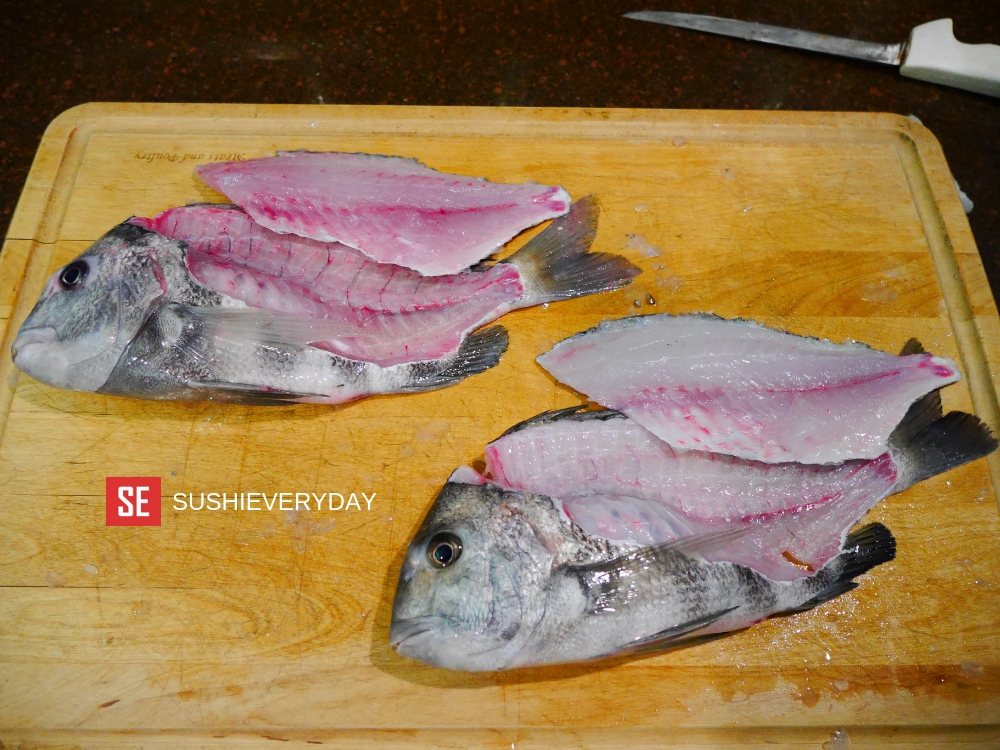
Looking at the two fish above (Sheepsheads), you can clearly tell the difference in the quality of the flesh between one that was bled and one that wasn’t. There are two methods to bleed fish. (1) cut the gill arches, or (2) cut the throat right below where the gill plates end.
Most Comprehensive Sushi Course Online
For whatever purpose, if you want to keep your catch alive in a livewell before you fillet it (maybe you don’t have ice), make sure its not in a vicious current flow so the fish doesn’t have to consistently fight to stay buoyant. The less stress the fish encounters the better off the quality will be. This will allow time for the lactic acid in the system to metabolize.
Reduce Discoloration and Extend Shelf-Life
Excess blood in fish makes it very difficult to clean and prepare properly for sushi. It is messy to fillet because blood will get on the meat, cutting board, knife, everywhere. Also, there will likely be deep blood spots in the meat, which is unappealing if you’re eating it raw. Second, as mentioned before, blood is a substrate for bacteria growth and reduces shelf-life. Many Japanese sushi chefs “age” their fish for several days and even to go as far as performing Ikejime to maximize quality and shelf-life, more on Ikejime later.
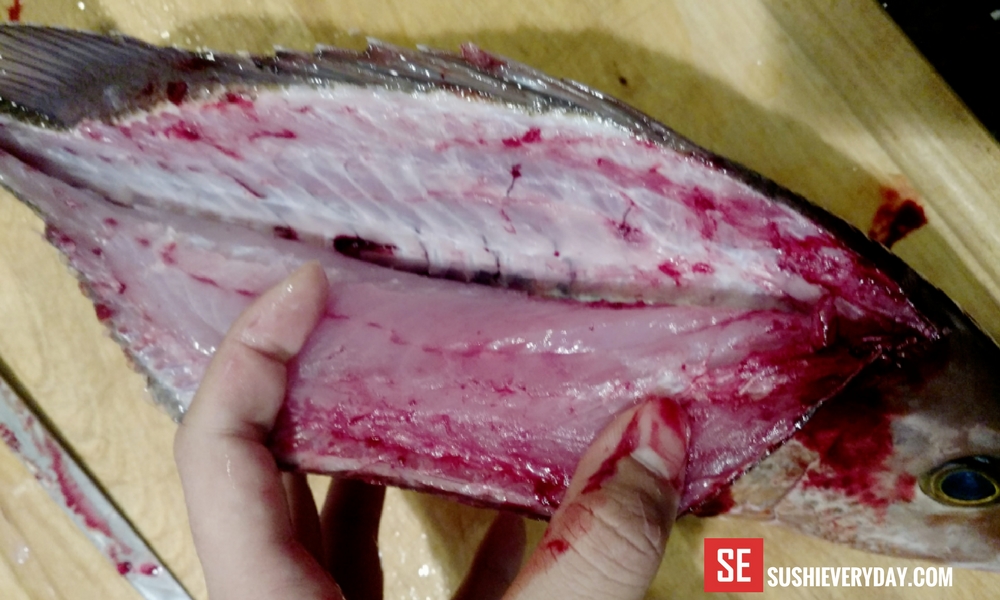
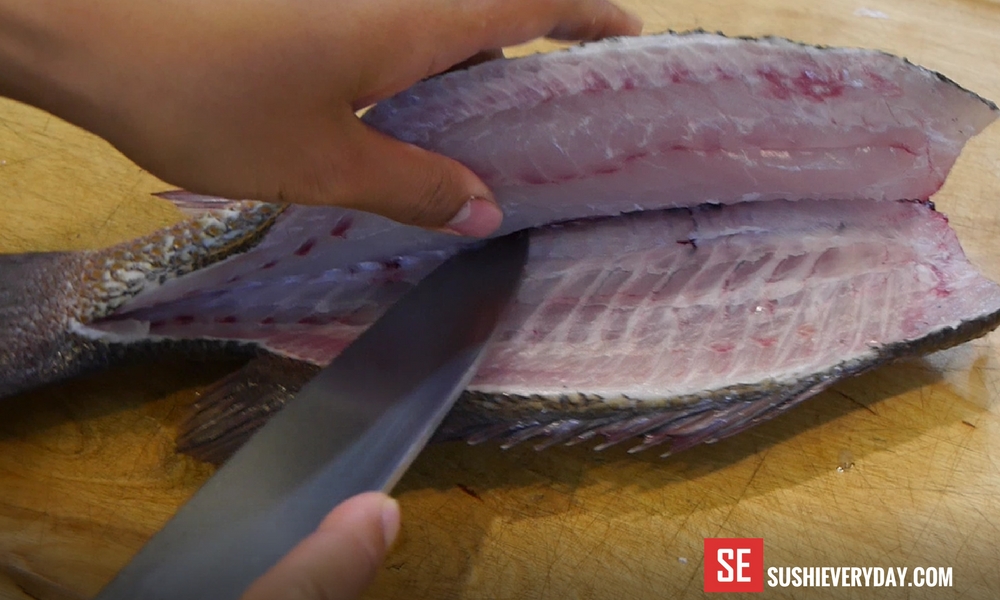
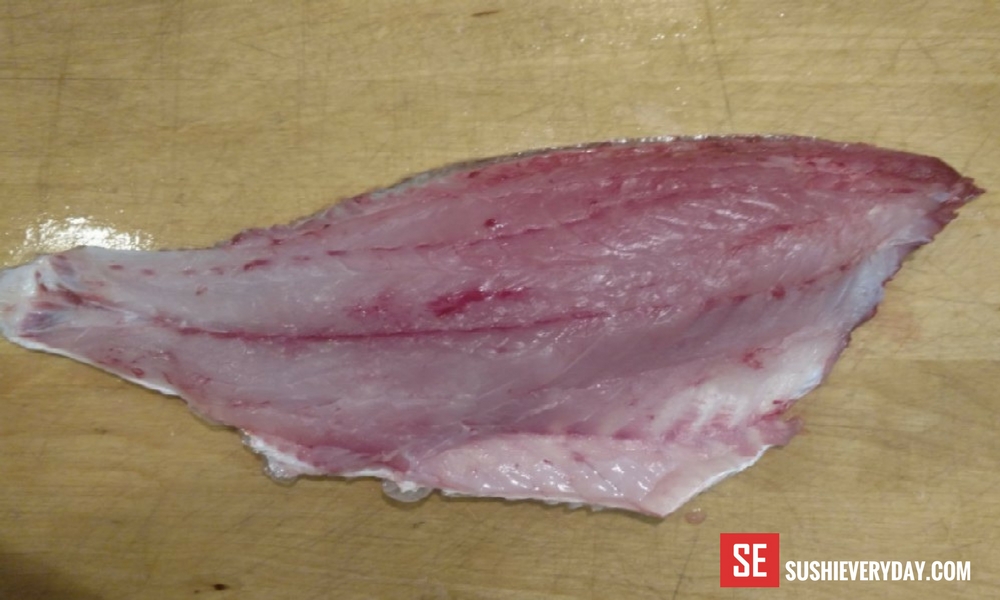
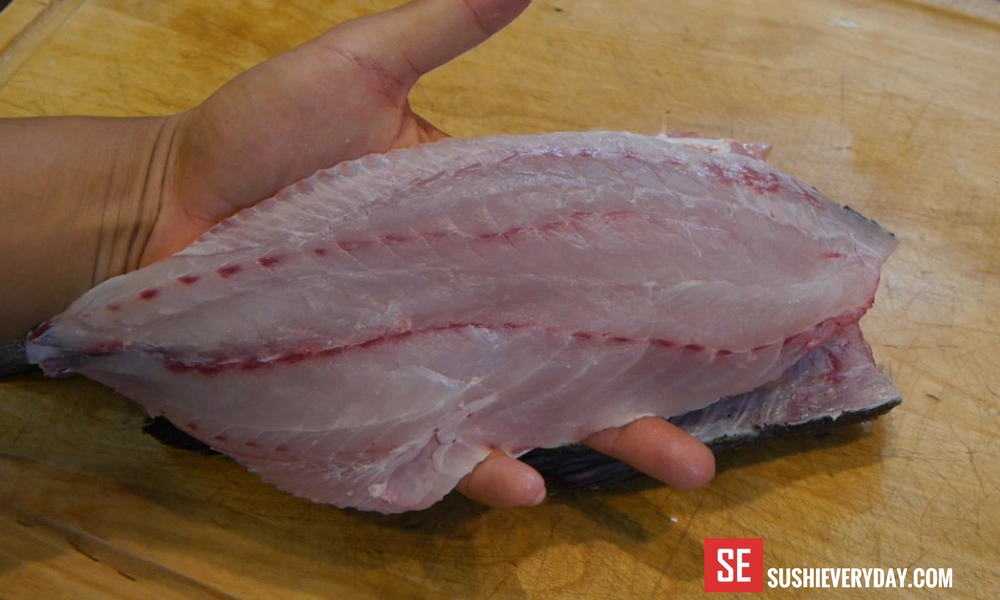
4 Simple Steps on Fish Handling:
Step 1- Bleed Your Catch
There are several ways professionals do this and it varies; however, it’s not rocket science. I find the easiest way is to make a quick cut to the throat and place it in a bucket of water for a few minutes. The water will prevent the blood from clotting and allow a full drain. Some people use a scissor and cut the gills instead, you’ll achieve the same goal.

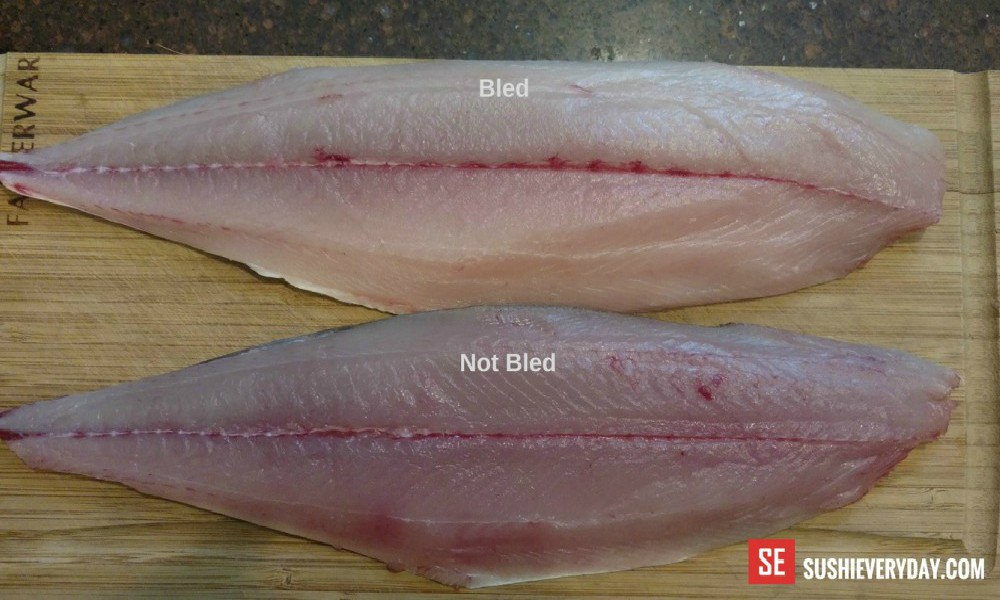
Want to see Spanish Mackerel Sushi?
Step 2- Ice the Fish Immediately
Seafood is unlike other protein and spoils rapidly. I can’t stress how important it is to ice your fish asap. Lowering down the temperature will retard bacteria growth and slow down the destruction of protein by enzymes, in a progress known as, autolysis, when cells start to decompose.
Step 3- Eviscerate and Rinse Thoroughly
If you don’t plan on cleaning your fish within the next couple of days after catching it, it’s important to remove all the guts and rinse off the fish well before icing it. Fish have bacteria in their gills, skin, and a high concentration in the stomach. Rinsing off the slime, again another substrate for bacteria growth, and gutting it will slow down bacteria growth. This is a common practice in the industry.
Step 4- After Filleting, Try Not to Rinse the Meat
If you plan on keeping fresh fillets in the fridge for several days, its a good idea to NOT rinse the meat. This is easier if you bleed your fish first. The absence of blood allows you to NOT have to wash the fillet in water. This is a huge deal, because water is the enemy. Remember osmosis? Next time you rinse your fillets, look closely and you’ll noticed that the texture and color will change slightly to a pale whitish look.
In general, meat will store better dry. Water and protein produces a breeding ground for faster bacterial growth. If the fillet is exposed to water, its important to dry it off promptly with paper towels. This is important for restaurants that requires several days for their product to be sold. The better condition it starts out with, the prolonged shelf life it’ll have.
For most people, the act of just icing your catch is enough, but for those in the business from catching, to processing, to serving, it’s important to handle every step of the process with the highest standard.
And to make it more complicated, the handling procedure varies from specie to specie. And there are different stages of quality, ranging from pre-rigor mortis to post rigor mortis texture. The guidelines I mentioned are simple and have been practiced on multiple species with good results. Hope you find this helpful the next time you go fishing.

If want to learn more about making sushi, check out my online sushi course on Udemy. There are over 40 video lectures and resources to help you get started making sushi at home. Learn Sushi Online.
What is Ikejime?
In addition to bleeding fish, the Japanese uses a technique called, Ikejime, to quickly “close” or kill the fish for preservation reasons. It involves spiking a metal rod down the brain and into spine of the fish to paralyze it, so all muscle movements seize immediately. This is also known as SCD, Spinal Cord Destruction. This further aids in preserving the texture and quality. The idea is to disconnect the nervous system to stop sending signals to the muscles, which can produce lactic acid, a by-product from glycolysis.
Typically, with smaller fish, I find the act of bleeding is sufficient enough. However, with larger fish like tuna, it may take a much longer time to bleed out the fish before it expires, so the Ikejime technique plays an important role in expediting this process. The video below is graphic, lots of blood but its a great demo. Did you notice the hook was attached to an electric wire? Talk about stopping the fish dead in its track.
YouTube Channel:
Check Out More:
